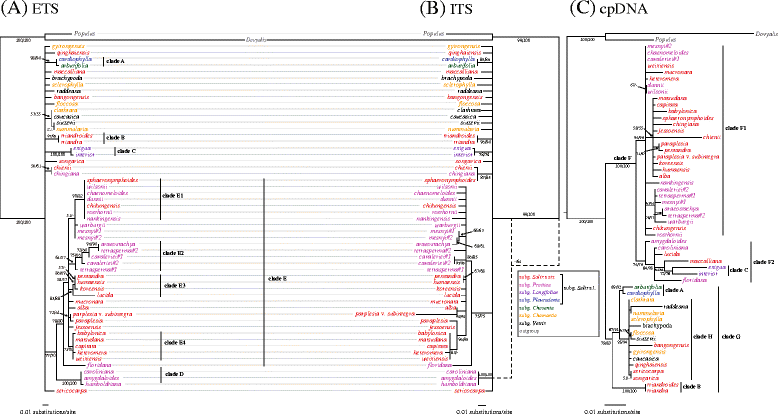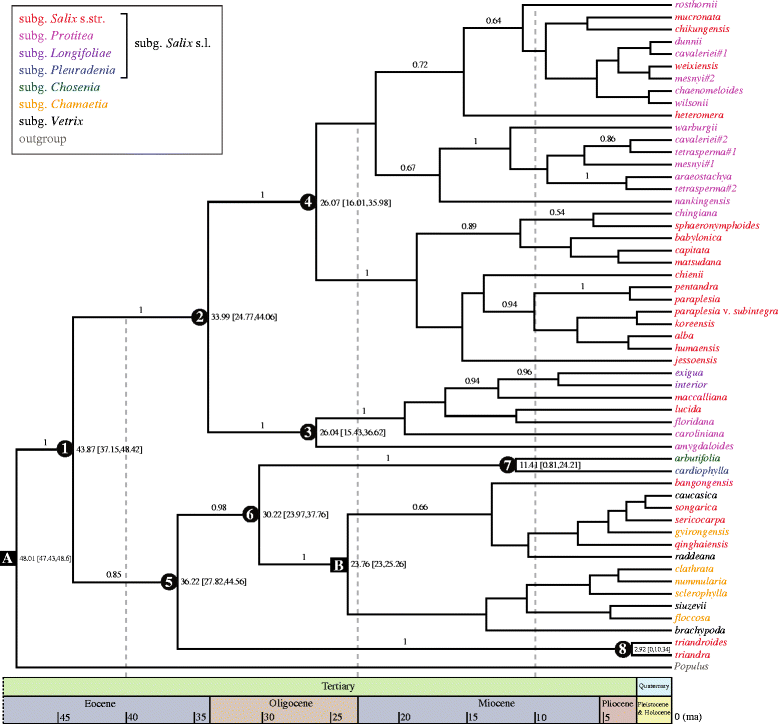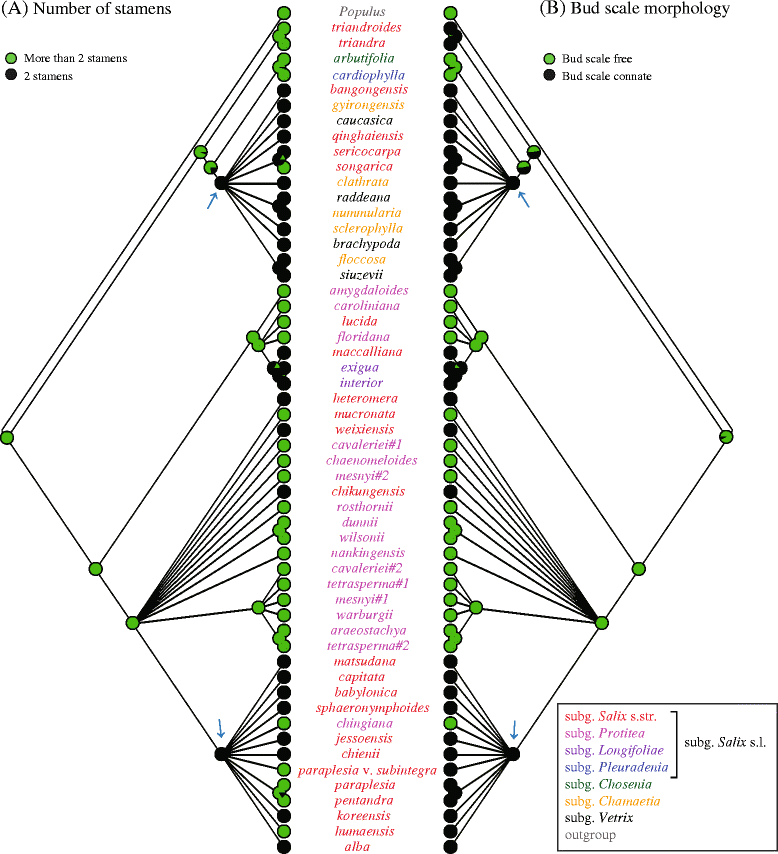Phylogeny of Salix subgenus Salix s.l. (Salicaceae): delimitation, biogeography, and reticulate evolution
- PMID: 25886526
- PMCID: PMC4357182
- DOI: 10.1186/s12862-015-0311-7
Phylogeny of Salix subgenus Salix s.l. (Salicaceae): delimitation, biogeography, and reticulate evolution
Abstract
Background: The taxonomy and systematics of Salix subgenus Salix s.l. is difficult. The reliability and evolutionary implications of two important morphological characters (number of stamens, and morphology of bud scales) used in subgeneric classification within Salix remain untested, and a disjunct Old-New World distribution pattern of a main clade of subgenus Salix s.l., revealed by a previous study, lacks a reasonable explanation. To study these questions, we conducted phylogenetic analyses based on 4,688 bp of sequence data from four plastid (rbcL, trnD-T, matK, and atpB-rbcL) and two nuclear markers (ETS and ITS) covering all subgenera of Salix, and all sections of subgenus Salix s.l.
Results: Subgenus Salix came out as para- or polyphyletic in both nrDNA and plastid trees. The plastid phylogeny successfully resolved relationships among the major clades of Salix, but resolution within subgenus Salix s.l. remained low. Nevertheless, three monophyletic groups were identifiable in subgenus Salix s.l.: the 'main clade' of subgenus Salix s.l., with New and Old World species being reciprocally monophyletic; the section Triandroides clade; and the subgenus Pleuradenia clade. While nrDNA regions showed higher resolution within subgenus Salix s.l., they failed to resolve subgeneric relationships. Extensive, statistically significant gene-tree incongruence was detected across nrDNA-plastid as well as nrDNA ETS-ITS phylogenies, suggesting reticulate evolution or hybridization within the group. The results were supported by network analyses. Ancestral-state reconstructions indicated that multiple stamens and free bud scales represent the plesiomorphic states within Salix, and that several significant shifts in stamen number and bud scale morphology have occurred.
Conclusions: Subgenus Salix s.l. is not monophyletic, and the evolutionary history of the subgenus has involved multiple reticulation events that may mainly be due to hybridization. The delimitation of subgenus Salix s.l. should be redefined by excluding section Triandrae and subgenus Pleuradenia from it. The evolutionary lability of bud-scale morphology and stamen number means that these characters are unreliable bases for classification. The disjunct Old-New World distribution of subgenus Salix s.l. appears to be linked to the profound climatic cooling during the Tertiary, which cut off gene exchange between New and Old World lineages.
Figures





References
-
- Argus GW, Eckenwalder JE, Kiger RW. Salicaceae. In: Flora of North America Editorial Committee, editor. Flora of North America. Oxford and New York: Oxford University Press; 2010.
-
- Fang Z, Zhao S, Skvortsov AK. Salicaceae. In: Wu ZY, Raven PH, Hong DY, editors. Flora of China. Beijing & St. Louis: Science Press & Missouri Botanical Garden Press; 1999.
-
- Skvortsov AK. Willows of Russia and Adjacent Countries. Joensuu, Finland: University of Joensuu; 1999.
-
- Rechinger KH. Salix taxonomy in Europe - problems, interpretations, observations. P Roy Soc Edinb B. 1992;98:1–12.
Publication types
MeSH terms
Substances
LinkOut - more resources
Full Text Sources
Other Literature Sources
Miscellaneous

